How to Train Your Dog Not to Bite
by dogtoyadvisor | Last updated on November 18, 2020
We only review products we tested ourselves. We have affiliate partnerships, so we get a share of the revenue from your purchase.
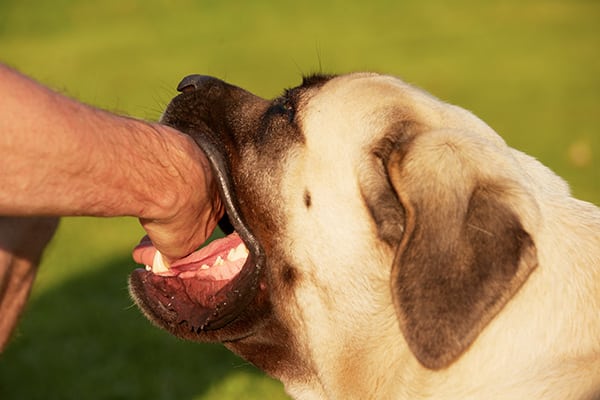
A dog using his teeth to express himself is what he’s programmed to do.
There are several degrees of biting to be considered.
Some dogs are more prone to warning bites whereas others can attack full on.
While one is more serious than the other, none is ideal and it is up to you to make sure your dog learns not to bite, ever.
Dogs learn differently than humans, the key is understanding how their minds work so you can solve MOST dog behavior issues.
Why Biting is Such a Big Problem
Biting is probably the worst behavior issue your dog can have.
Not only can he seriously hurt a person or animal, but it can also make your relationship with him strained.
If your dog attacks a person or an animal, odds are you will be left with a hefty doctor/vet bill.
But it can also brand your dog as dangerous that can actually lead to apprehension and, in the possible worst case scenario, euthanasia.
Also, there is nothing worse than not trusting your own dog, not feeling safe around him.
Luckily, we found one training technique through an online dog training course that solved our dogs’ biting issues and changed our lives.
Why Your Dog Bites
There are several reasons for your dog to bite.
The simple answer would be, he just doesn’t know any better.
He’s been biting since he was a puppy and was never taught any better, meaning he bites to let you know he’s bored, annoyed, angry, etc.
Your dog can be in pain. If he is suddenly biting when you touch him, the best course of action is taking him to the vet to make sure everything is okay.
What To Do If Your Dog Is In Pain
If you are able to tell your dog is in pain, you need to act immediately.
If you’re able to identify the source of the pain and it’s easily resolved, like a small wound, something stuck in his paw, etc, it’s easy enough to solve.
However, if it’s something more serious or that you can’t identify the source, you need to take your dog to the vet and get it properly checked out.
Some dogs bite just to draw your attention to them, excitement or due to having too much energy accumulated and too little exercise.
In other more serious, harder to solve cases, a dog can bite out of fear or protectiveness.
With other dogs, you may also see hormonal biting, like two females in heat or two dogs who cross paths with a female in heat nearby.
How Dog’s Brains Work
Only when you understand how a dog learns can you train him effectively in a way that he will acquire that knowledge and never forget it again.
We struggled a lot with training our dogs, we thought that, just because each had a different personality, we’d never be able to teach them in the same way.
Luckily, we were able to find Adrienne, a certified dog trainer who’s developed a training method that really works.
By doing her online dog training course, we were able to learn how to train our dogs in a positive, lasting way that completely changed our family dynamics and increased our overall bond with our dogs.
Best yet, we realized that Adrienne’s training tips could be applied to pretty much any behavior issue, like barking, jumping, potty training, etc.
After that, we completely changed the way we train our dogs and began seeing results that have lasted over the years.
12 Tips on How to Train Your Dog Not to Bite
Living with a dog that bites can be a nightmare that seems impossible to stop.
But, with a bit of positive reinforcement and the right training tips, like the ones we learned from Adrienne’s online course, it’s actually simple.
We suggest you read on, find out how we curved our dogs’ biting behavior and try it yourself!
1 – Socialize Your Dog
You need to work on socializing your dog from the first moment he enters your front door.
Yes, it’s easier to do if he’s a puppy, but it’s not impossible to socialize an adult dog!
Introduce your dog to as many places, people, animals and situations as possible.
This will make sure your dog is more confident and less likely to bite out of fear.
When you’re socializing an adult dog, particularly one you don’t know very well yet, you need to do it a bit slower.
Always be on alert for any triggers than may scare him and do the exact opposite of what you intend.
2 – Spay/ Neuter Your Dog
Spayed/neutered dogs are calmer, more chilled and less likely to be aggressive.
They won’t be as interested in other dogs and won’t be as territorial either.
It also prevents biting due to hormonal reasons.
3 – Know That Any Dog Can Bite
In the wrong situation, any dog can bite.
Assuming that your dog, who’s never bitten before, is incapable of biting is a mistake that may have negative consequences.
Also, some people assume certain breeds don’t bite while others do and this is also a mistake.
While breeds do have certain personality traits associated, each dog is a dog and ALL dogs are capable of biting.
4 – Identify the Triggers
If you can tell what makes your dog bite, you can prevent it by either avoiding the situation or training him to desensitize him of the trigger.
Watch your dog closely, see what makes him edgy, fearful, angry, etc.
Determine what causes his biting behavior and work with your dog on it to curb the behavior once and for all.
5 – Keep Your Dog Calm
If you have a nervous or fearful dog on your hands, you may need a bit of extra help to keep him relaxed.
At the very least, you’ll want to use these very effective helpers while you’re training him and until you’re absolutely certain he has learned the desired behavior.
With our dogs, we use these wonderful Hemp Calming Treats when we’re working with them on issues that make them nervous or scared.
These bacon-flavored treats are made with 100% natural ingredients and our dogs love the taste.
Almost immediately you’ll notice them getting calmer and more relaxed.
6 – Don’t Allow Play Biting
If you teach your dog that biting during playtime is okay, how are you supposed to teach him that he can’t bite otherwise?
Make both your lives easier by banning biting altogether.
When our dogs are in a biting mood, we just offer them their favorite dog toy and let them play.
We can still play with them using the toy and, if they get excited and bite our hands instead, we make it clear to them that it isn’t okay by saying no or just stopping playtime.
7 – Work on Obedience Training
Like we’ve mentioned before, we are obedience training fanatics.
Not because we’re always teaching our dogs new things but because we believe that obedience training is the best way to convey to our dogs what we expect from them.
For this, we use what we’ve learned from Adrienne’s online dog training course that is ideal for all dog ages, sizes and personalities.
We haven’t found a dog that doesn’t respond to it brilliantly yet.
Dogs that are used to obedience training are easier to teach, it also boosts their confidence and provides them the structure they need to be more balanced.
8 – Always Use Positive Reinforcement
The best (only?) way a dog will learn a behavior in a confident, happy way is by using positive reinforcement.
Punishment is never the way, but it most certainly won’t curb your dog’s biting, since it is proven to make dogs more aggressive.
Much like children, they do what they know, right?
Positive reinforcement can be tasty treats, extra play time, verbal encouragement, petting, or any other activity your dog enjoys.
9 – Just Say No
One of the most important words your dog needs to learn and react immediately to is NO or STOP.
If he’s trained, this is all you’ll need to keep him from biting.
You can also reinforce the idea by rubbing your hands with something that will taste awful to your dog.
For us, it was lemon.
We would rub lemon juice on our hands and each time one of our dogs decided to bite our hands we’d say no at the same time he would feel the lemon taste.
Quickly, the word no became enough to make him stop and that’s where you start praising the good behavior with words, tasty treats, etc.
10 – Learn How to Read Body Language
Body language is the most obvious way your dog has to communicate how he feels.
So, naturally, being aware of your dog’s body language will allow you to identify when your dog is feeling nervous, scared, insecure, etc.
The obvious signs are bared teeth, raised hackles, lowered head or ears lying flat against the head.
They mean a dog is uncomfortable and may bite.
In these situations, you can choose to remove your dog from the situation, advise people to back away and give your dog some room.
In milder cases, just distract your dog with his favorite toy or some tasty treats.
Reading his body language will also let you know when he just has too much pent up energy, meaning you need to exercise him more.
11 – Be Consistent
As with any training, you need to be consistent.
In this specific case, it means to do the exact same thing all the time.
Every time your dog bites or tries to, you need to react the exact same way, regardless of your mood, the situation or the intensity of the bite.
Every time your dog is in a situation where he becomes nervous, scared or anxious and you know that the next step is him biting, always react the same way.
12 – Work On Your Dog’s Confidence
If you’ve identified your dog bites because he’s insecure and reacts out of fear, you need to work on his confidence.
We’ve had the same issue and have a great guide to boost your dog’s confidence for you.
If you work with your dog to make him feel more confident, you’ll notice him becoming less fearful and naturally it will curb the biting.
Affiliate links / Images from Amazon Product Advertising and iStock
Recommending Reading:


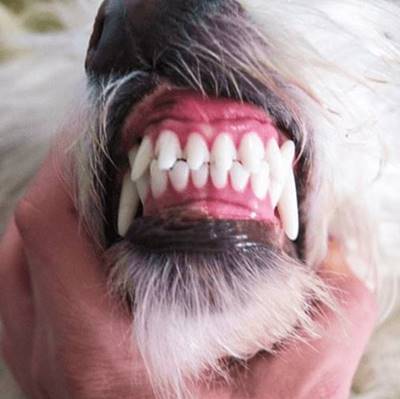
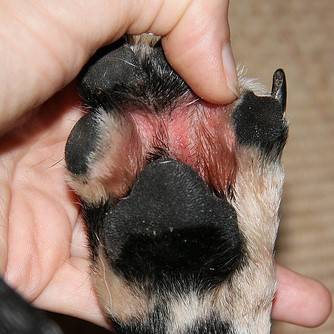


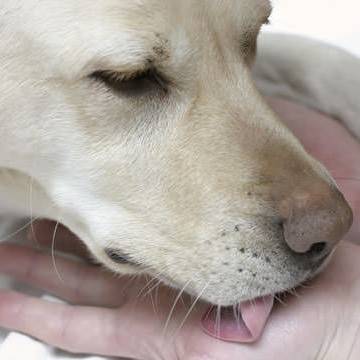
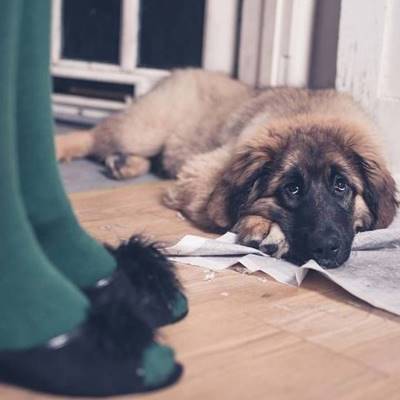

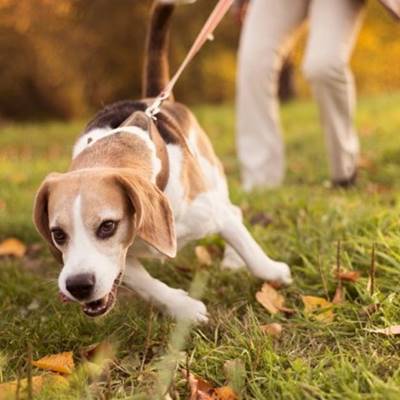
0 Comments